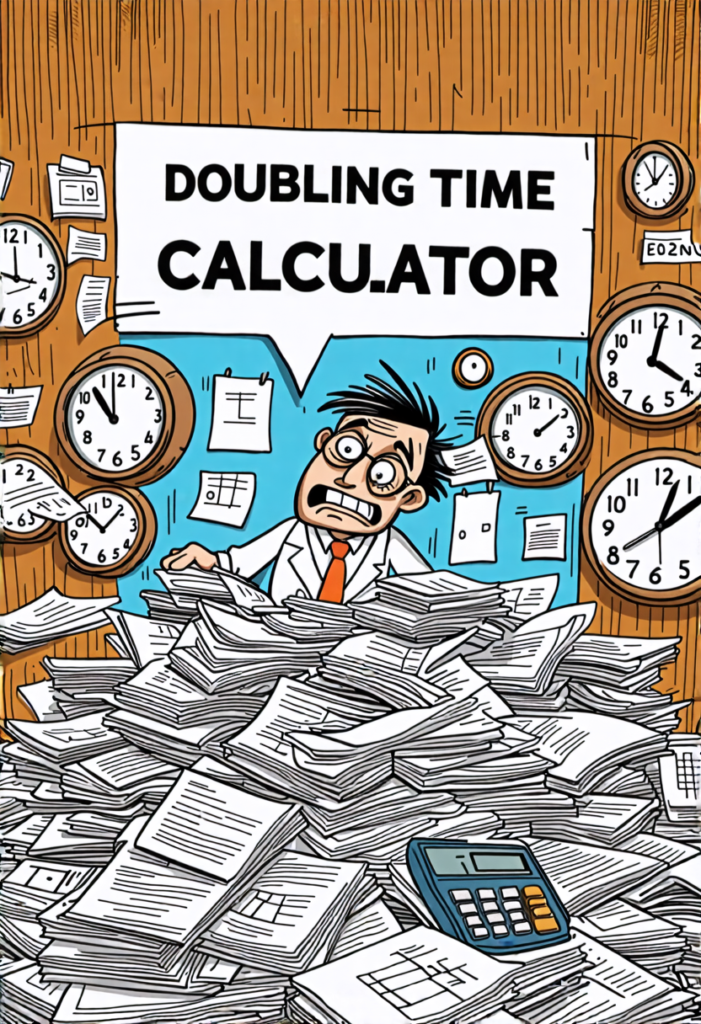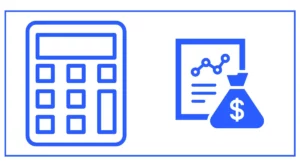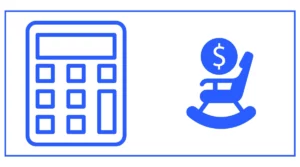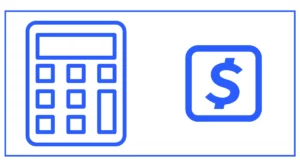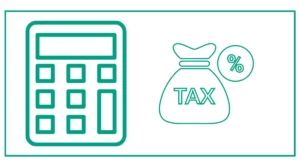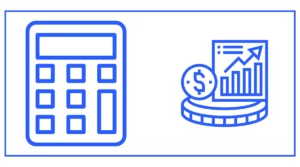Doubling Time Calculator
The doubling time calculator helps you calculate the period when your given amount will be doubled, given that there is a constant growth rate.
To use the doubling time calculator, enter the increase % per period and the initial amount.
Our tool also shows a graph you can save as an image by right-clicking and saving it as an image.
You can also use this tool to find the doubling time of population, inflation, size of investment, etc.
Doubling time refers to the duration needed to double a given quantity, assuming a constant growth rate. It is also known as the rule of 72.
The doubling time formula is:
Doubling time= log2/log(1+increase)
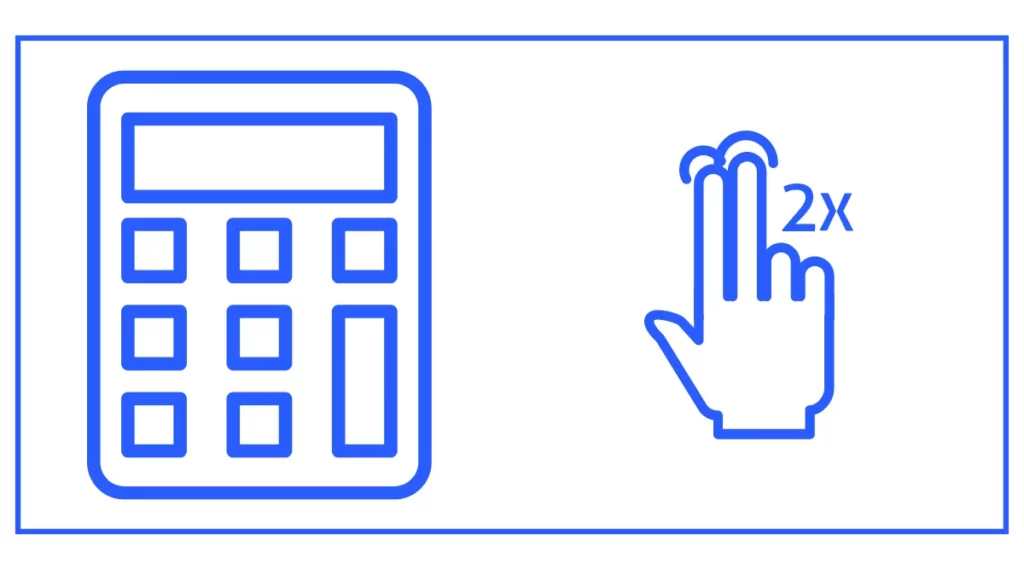
You might want to use the impairment benefit calculator or Dave Ramsey tool for investment.
What is Doubling Time?
Doubling time refers to the period required for a quantity to double in size or value, assuming a constant growth rate. This concept is particularly useful in understanding exponential growth patterns, where the rate of increase is proportional to the current value.
Applications of Doubling Time
Doubling time finds applications in numerous areas:
- Finance: Investors use doubling time to estimate how long it will take for their investments to double in value.
- Biology: Scientists employ doubling time to study cell growth and bacterial reproduction rates.
- Population Studies: Demographers utilize doubling time to predict population growth.
- Economics: Economists apply doubling time to analyze inflation rates and economic growth.
The Doubling Time Formula
To calculate doubling time, we use the following formula:
Doubling Time = ln(2) / ln(1 + r)
Where:
- ln is the natural logarithm
- r is the growth rate per period (expressed as a decimal)
This formula provides a precise method to calculate the time it takes for a quantity to double, given a constant growth rate.
Using the Doubling Time Calculator
A doubling time calculator simplifies the process of determining how long it will take for a quantity to double. Here’s how to use it effectively:
- Input the growth rate: Enter the percentage increase per period.
- Specify the initial amount: This helps visualize the growth over time.
- Click “Calculate”: The calculator will determine the doubling time and display a graph showing the growth pattern.
The calculator uses the doubling time formula to provide accurate results, making it a valuable tool for quick estimations and visualizations.
The Rule of 72: A Quick Approximation
For those seeking a faster, albeit less precise, method to calculate doubling time, the Rule of 72 offers a practical solution.
Understanding the Rule of 72
The Rule of 72 is a simplified way to estimate doubling time, particularly useful in financial contexts. It states that you can approximate the number of periods required to double an investment by dividing 72 by the growth rate (expressed as a percentage).
Rule of 72 Formula:
Doubling Time ≈ 72 / Growth Rate (%)
For example, if an investment grows at 6% per year, the estimated doubling time would be:
72 / 6 = 12 years
While not as accurate as the logarithmic formula, the Rule of 72 provides a quick and easy way to estimate doubling time, especially useful for mental calculations.
Practical Examples of Doubling Time
Let’s explore some real-world applications of doubling time to better understand its significance:
1. Investment Growth
Suppose you invest $1000 with an annual return of 7%. Using the doubling time calculator, we find it would take approximately 10.24 years for your investment to double to $2000.
2. Population Growth
If a city’s population grows at a rate of 3% per year, the doubling time calculator shows it would take about 23.45 years for the population to double.
3. Bacterial Growth
In optimal conditions, some bacteria can double every 20 minutes. This rapid doubling time explains why bacterial infections can spread so quickly if left untreated.
4. PSA Doubling Time
PSA (Prostate-Specific Antigen) doubling time is a critical measure in oncology. It refers to the time it takes for PSA levels to double in a patient’s blood. A shorter PSA doubling time often indicates more aggressive cancer growth.
Factors Affecting Doubling Time
Several factors can influence doubling time:
- Growth Rate: Higher growth rates lead to shorter doubling times.
- Initial Quantity: While not affecting the doubling time itself, the initial amount impacts the absolute increase.
- External Factors: In real-world scenarios, factors like resource limitations can affect growth rates and, consequently, doubling times.
Limitations of Doubling Time Calculations
While doubling time is a useful concept, it’s important to understand its limitations:
- Assumes Constant Growth: Real-world growth rates often fluctuate, affecting the accuracy of predictions based on doubling time.
- Ignores External Factors: Doubling time calculations don’t account for external influences that might accelerate or decelerate growth.
- Simplification: For complex systems, doubling time provides a simplified view that may not capture all nuances of growth patterns.
Advanced Applications of Doubling Time
Beyond basic calculations, doubling time finds advanced applications in various fields:
1. Compound Interest
In finance, doubling time helps investors understand the power of compound interest. By reinvesting earnings, the time to double an investment can be significantly reduced.
2. Technology Growth
Moore’s Law, which observes that the number of transistors on a microchip doubles about every two years, is a famous application of doubling time in technology.
3. Epidemiology
During disease outbreaks, epidemiologists use doubling time to track the spread of infections and predict future cases.
Using Doubling Time for Predictions
Doubling time serves as a powerful tool for making predictions:
- Short-term Forecasting: For periods close to the calculated doubling time, predictions are often quite accurate.
- Long-term Projections: As the time frame extends, predictions become less reliable due to changing conditions.
- Comparative Analysis: Doubling time allows for easy comparison of growth rates between different entities or phenomena.
FAQ: Common Questions About Doubling Time
How is doubling time different from half-life?
Doubling time measures the period for a quantity to double, while half-life measures the time for a quantity to halve.
Can doubling time be negative?
No, doubling time is always positive. Negative growth rates indicate decline, not doubling.
How accurate is the Rule of 72?
The Rule of 72 is most accurate for growth rates between 6% and 10%. Outside this range, it becomes less precise.
Can doubling time change over time?
Yes, if the growth rate changes, the doubling time will also change.
Is doubling time the same as exponential growth?
Doubling time is a characteristic of exponential growth, but they are not the same concept. Exponential growth refers to the growth pattern, while doubling time is a specific measure within that pattern.
